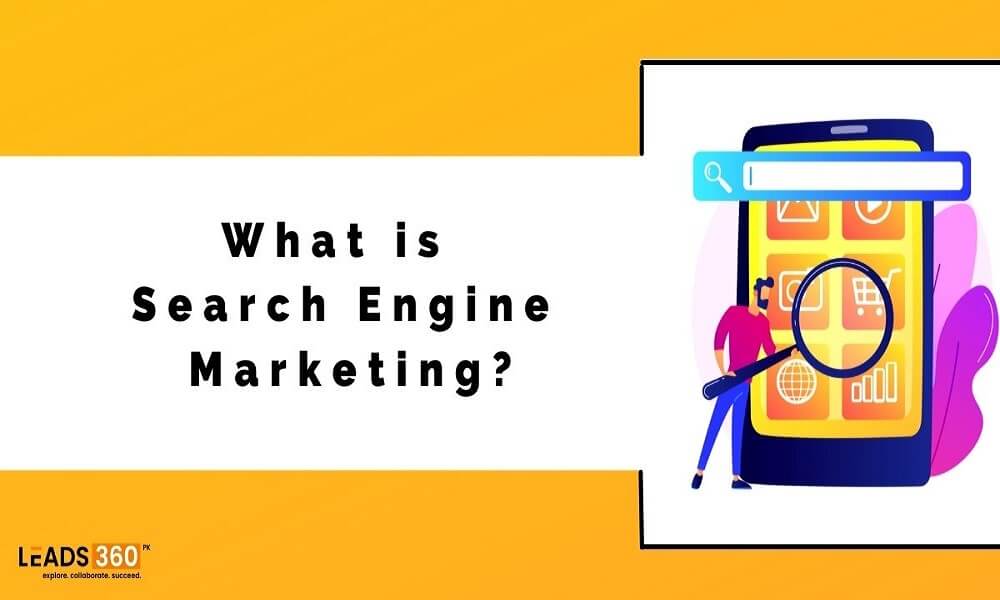
The development of modern digital technologies has provided users with endless opportunities to search and exchange information on the Internet. However, the abundance of various data, which is located on numerous Internet resources, increases the search time and makes it challenging to select the required information. Therefore, countless corporate resources in competition for their customers actively use modern Internet marketing technologies, among which search engine marketing is wildly popular. Today, this method is an effective way to improve the visibility of corporate sites in search engines and an effective way to attract the target audience of B2B and B2C. A well-chosen strategy for this type of marketing increases the site’s position and increases targeted traffic.
WHAT IS SEARCH ENGINE MARKETING?
In creating and promoting corporate sites, many Internet resources and websites are actively using search marketing (“Search Engine Marketing”). These technologies are based on the use of technical means of search engines to attract interested users. For example, a copywriter’s client enters the request “original content for the site, “then sees the site of a professional copywriter in the search (contextual) advertising block or the first positions (TOP-10), then follows the link to the website and places an order for the services of a technical copywriter. It is beneficial to everyone: the copywriter optimally manages the budget to promote the site, and the client quickly finds the right resource.
Unlike other promotional activities, SEM marketing’s effectiveness is associated with the amount of funding and how professionally the advertising budget is allocated. For example, if you clearly define the target audience of a corporate website, set specific goals for attracting target customers to an Internet resource, and develop an effective strategy for working with potential visitors, you can provide targeted traffic at a relatively low cost. For comparison, similar advertising in the media, on TV or radio, will cost an order of magnitude more.
Therefore, search engine marketing services will be extremely beneficial for owners of B2C and B2B Internet resources. Indeed, when using this approach, financial costs for casual visitors and “just interested” are practically excluded. A correctly chosen strategy guarantees an increase in website conversion and stable sales of goods and services from the beginning of the SEM campaign.
HOW DOES A SEARCH ENGINE WORK?
As you know, a search engine is a service for finding information on the Internet. It helps find the necessary information, files, or documents on the world wide web’s vastness by keywords. The delivery of results is ensured by the so-called robots or crawlers that regularly scan the web for updates and indexers that analyze the pages’ content.

Today, most of these systems use ranking mechanisms that allow you to select the most relevant, visited, and proven sites from a million pages, thereby making it easier and better for users.
SEARCH ENGINE MARKETING TECHNIQUES
Providing interested users with up-to-date and relevant information that best suits the entered queries is the primary goal of search marketing. The toolkit’s effectiveness is associated with choosing the right methods that are optimal for advertising campaigns: Here are some techniques of search engine marketing.
SEARCH ENGINE MARKETING TECHNIQUES

Within this method’s framework, measures are carried out for the Internet site’s internal and external optimization. The compliance of the resource with the requirements of search engines is ensured. In performing search engine optimization of the site, work is carried out to change the design, fill the resource with quality content, and improve usability and navigation elements.
There are several requirements for content and design, among which, in addition to keyword density, it is usually recommended to consider the following details:
- One main h1 tag, unique for each page and containing its keywords.
- The alt & title attributes of all images on the site, if possible, reflect the essence of the image.
- Layout of text using paragraphs <p> text </p>
- Dashes and quotation marks as special mdash characters,
- Lack of links to non-existent files and pictures.
- The text of links is different from the design of the main text of the page.
- Transferring styles and scripts to separate style files to facilitate code and optimize page loading.
- No duplication of content on other pages of the resource.
- Rel = “nofollow” and target = “_blank” attributes for external links or buttons to avoid indexing and opening them in the same tab.
- “Breadcrumbs,” or breadcrumbs, showing the user’s location.
CONTEXTUAL ADVERTISING
Placement of advertising materials on any Internet sites similar to the subject of advertisements. This way is based on the premise that some visitors will be interested in the presented ad and go to another resource. The cost of contextual advertising is directly related to the popularity of queries: the more often users enter a common keyword in the search box, the higher the advertiser’s costs for this method. The main difference between contextual advertising and ordinary SEO is the ability to get to the top lines of search not in a “natural” way, but for a fee: a contract is concluded between the company and the service provider (Google AdSense, Yandex Direct, Yahoo!, etc.), which regulates the procedure ad impressions if the request and pre-specified keywords match.
SEARCH ADVERTISING
Promotion of information relevant to the most popular queries by placing advertisements in search engines. This method effectively attracts the target audience and is one of the PR campaign’s corporate Internet resources directions. When using geographic targeting, advertising opportunities are dramatically expanded – in this case; you can provide stable traffic to interested Internet users.
STATISTICS FOR SEARCH ENGINE MARKETING
Currently, there are effective statistics systems at the disposal of internet marketers and webmasters. Thanks to detailed statistics, you can get precious information about visitors to your corporate website:
- Key phrases by which visitors come.
- Number of pages seen and time spent on the site.
- Sources of referrals (websites, search engines, social networks, direct visits, advertising networks, etc.).
- Geography, interests, and activity of visitors by the time of day.
- User behavior on the site with form analytics and unique maps.
- Internet technologies used (a type of browser used and installed operating system, resolution of monitors, availability of mobile devices, etc.)
To get detailed information about the actions of visitors to Internet resources, you can use the unique capabilities of the most extensive statistics systems:
GOOGLE ANALYTICS
An advanced analytical system from Google; it has excellent functionality to customize analytical tools for webmasters and marketers’ specific requirements.
CONCLUSION
Search engine marketing is akin to real art, mastering which you can achieve excellent results. After all, users in a hidden form receive useful information directly related to the topic of search queries. In many years, this type of marketing has received well-deserved recognition among millions of Internet users. Their goals, interests, and needs are best reflected in search results when relevant information on goods or services is in sight at the right time.